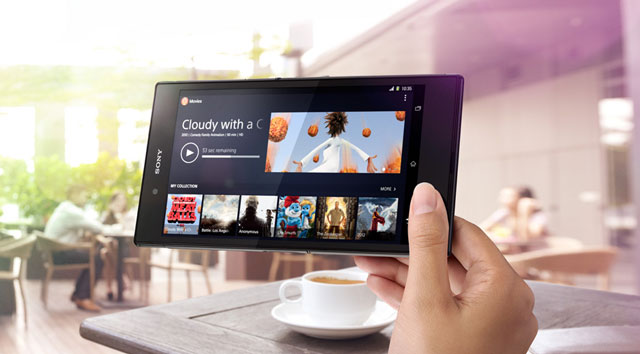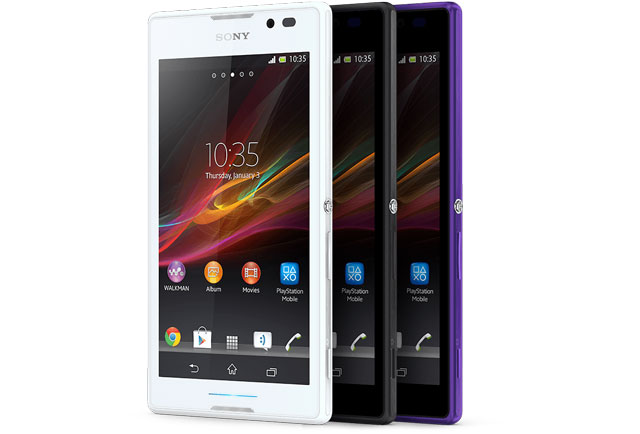
Sony has made a remarkable comeback in smartphones in the past year. The super-thin 5-inch Xperia Z, regarded as one of this year’s top Android smartphones, has been lauded by critics.
Now, say executives at Sony’s regional office, the company is hoping to expand on the Xperia Z’s sales success with a range of new mobile products, led by its first “phablet” (it’s not calling it that), the Xperia Z Ultra, which has an enormous, 6,4-inch screen.
Sony Mobile Communications South Africa marketing manager Andrew Fraser says the Z Ultra will be marketed as a phone rather than as a tablet, despite its enormous size (it’s even bigger than Samsung’s popular Galaxy Note II handset, which has a 5,5-inch screen).
He admits the Z Ultra will be a niche product, but believes there is demand from people who are tired of carrying a tablet and a phone. “This solves the problem with a single unit with a big screen,” he says. “It’s still slim and small enough to use as a phone, but you can put it in a jeans pocket.”
The finger- or pen-driven Z Ultra weighs 212g, has a 1080p display, supports 4G/LTE wireless broadband and, like the Xperia Z, is water and dust resistant. It has a fast, 2,2GHz quad-core processor and a large, non-removable 3 050mAh battery.
It will go on sale in South Africa in early October, but Sony hasn’t yet revealed recommended pricing. It will probably cost about R10 000 outside of a contract with a cellular service provider.
Another product Sony will launch in South Africa in October is the new Xperia C, which it expects will be a big seller because of its features and price. The C is a dual-Sim smartphone with a 5-inch display that, unlike the Xperia Z, is aimed squarely at the large mid-tier segment of the market. It’s expected to retail for less than R4 000 when it goes on sale. That’s half the price of top-end Android smartphones.
Sony has cut the cost of the Xperia C by using a lower-resolution display than the Z — 960×540 pixels as opposed to the Z’s 1080p screen. There’s also no 4G/LTE, it’s not water resistant, and the processor is a slower but still respectable 1,2GHz quad-core unit. The camera is eight megapixels and the phone is powered by a 2 390mAh battery. Like the Xperia Z, it comes in white, black and Sony’s distinctive purple.
The only challenge Sony could face with the Xperia C is in convincing the large South African mobile operators to sell a dual-Sim phone. This is something they have been reluctant to do in the past. Sony is in talks with them about launching the C through their channels.
“This device was designed specifically for emerging markets,” says Fraser. “It’s really difficult to have a proper smartphone experience on a small screen yet for many people in emerging markets, the mobile Internet is the only access to the Internet they have. With this device, you can look at a proper Web page on a 5-inch screen.”

Fraser says Sony is winning market share from its rivals — in South Africa, it’s volume market share has risen to 4,5% of smartphone shipments, he says, citing research by GfK. This is because its mobile business is better able to tap into innovation elsewhere in the larger Sony.
“We can offer something a little different, rather than just throwing in gimmicky software,” he says. “In cameras, for example, Sony has a long history in developing imaging chips. Our mobile screens use the Bravia engine [used in Sony TVs] — software encoding to maximise the quality of images you see on the screen.”
Middle East and Africa sales director Mark Fenzel says Sony Mobile Communications has been on a tear since it parted ways with Ericsson last year.
“Having one company behind the brand makes it much easier to work across different areas,” Fenzel says. “With Sony Ericsson, it was always two separate companies. Sony Ericsson always had fantastic ideas, but it was sometimes challenging to have access to the latest technologies and the right people in the business units to really make it happen.” — (c) 2013 NewsCentral Media




